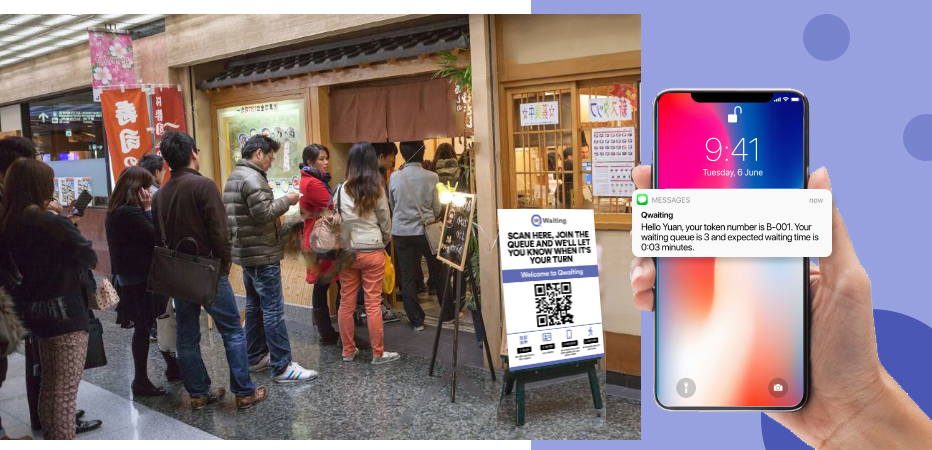
Everyone wants instant solutions and at their fingertips in today’s rapidly growing environment. Customers have become increasingly restless, especially in terms of retail services. This is because of rising online shopping demand and the facility of the ‘shop now’ option. Of course, time is a valuable asset, and no one can manage to spend it standing in long lines for a certain service or product. Poor queue management irritates customers and causes problems for a variety of retail firms. So, many businesses have either migrated or are preparing to switch to the queue management system software. Retailers can benefit from reduced wait times, lower abandonment rates, and higher user satisfaction.
Overall, a queuing system can assist retailers in effectively managing lineups, providing a streamlined customer experience, and engaging buyers.
Queue Management System Explained
There can be numerous reasons for overcrowded waiting rooms and long lineups. Also, such physical queues are unstructured or may have fewer service locations making the people wait. These are few restrictions that affect the business bottom line, and businesses must pay attention to this issue.
Queue management is the process aiming at making the queuing procedure more flexible, efficient, and streamlined. It examines consumer flow, service mechanisms, arrival methods, employee behavior, etc.
Furthermore, using an effective retail queue management system assists employees in handling virtual waits to the best of their abilities. They can easily serve clients, notify on their turn, and satisfy consumers without the burden of dealing with long queues.
As a result, the business’s bottom line improves because the employees can serve customers more swiftly and efficiently.
Benefits of Queuing System
No shopper wants to wait in queues for long. Furthermore, customers prefer returning to a store that understands their concerns and respects their time.
To put it better:
- 83% of consumers think fast-moving lines are necessary for simplified UX
- Also, 76% of users believe businesses need to focus more to minimize peak time lineups
All of this suggests that now is the time for retailers to reduce wait times to maintain business efficacy.
Let’s take a look at how queuing software can help modern businesses.
Personalize User Experience
Offering a wide range of products may leave customers confused and make them look for assistance. As a result, businesses need to understand each customer’s buying persona to improve the experience.
Qwaiting, which delivers consumer data and insights into their shopping behaviors, may be the ideal option for this. Even if lineups are kept under control, it assists organizations in providing customers with the predicted wait times. This way, customers will not feel as if their time is being wasted, and can utilize their waiting time to do other important duties.
Enhance Workforce Productivity

Of course, listening to customer complaints, yellings, and seeing extremely long lines stresses off the staff.
If the business has a good queueing system in place, it can reduce employee stress while streamlining the shopper flow.
Also, the workforce will find them more productive when they are capable of meeting the consumer needs efficiently and hassle-free. As a result, their work performance will improve, and easy management of queues will improve in the long run.
Decrease Queue Anxiety
When we’re waiting in lines, one of the most annoying things is no knowledge of how long we’ll have to wait. Such uncertainty has the potential to affect sales and customer retention in more ways than businesses can imagine.
In addition, to wait times, checkout is one critical touchpoint that transforms the overall shopping experience which many businesses overlook.
As a result, Qwaiting is an ideal option for avoiding queue anxiety. It helps in the collection of real-time data about shoppers and waits times, as well as informing customers about their queue status. Customers’ stress levels reduce and they stay calm once they have an idea of how long they will have to wait in line. Also, it not only satisfies customers with wait time estimates but also helps store managers in staffing the stores appropriately.
Minimize Consumer Walkaways
A virtual queuing system includes a notification and SMS alert feature that relieves the consumer’s pain of waiting in long queues. They can wait wherever they choose and go to the store once they receive notification for their turn.
Another strategy to reduce walkaways is to keep consumers busy. You can use display boards in the store to show the current status of the queue. Also, you can engage customers by providing more information, such as upcoming specials, discounts, or a new product introduction.
Boost Business Reputation
When lineups are organized, it gives customers a positive impression of their visit. If the user’s time is appreciated, it will certainly impact their feedback and impressions of the firm positively.
Hence, implementing queue management software successfully alters client opinions of the company as being innovative and modern.
Streamlines Store Operations
Queuing software allows businesses to determine the number of customers still waiting to be served, as well as the requirement to create extra service counters for improved queue management.
Because a queuing system helps predict consumer footfall in advance, customer service teams can be streamlined and business operations can be managed efficiently. Thus, when the staff is capable of predicting shopper volume wait times, performing the business without any stress becomes easy. As a result, when the staff can determine consumer volume and wait times, managing the store operations becomes easy.
Importance of Queue Management System for Modern Businesses
Because of today’s digital solutions and technical enhancements, every firm needs to scale up its service to meet client demands. And, if a firm fails in meeting client’s entails, they are likely to switch elsewhere.
As a result, using the Qwaiting management system can assist any firm in managing client flow in the store while maintaining sales and user pleasure. It also offers ease of access and flexibility and is appropriate for diverse businesses.